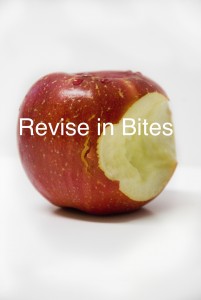“Radio shows of old … Listeners heard simple sound effects and limited descriptions, then filled in the details in their minds. Suddenly they were no longer sitting in front of a radio—they were there.” —Marie Lamba
Let readers help write our stories? In the September 2015 Writer’s Digest article, “Reader Is My Copilot,” Marie Lamba convinced me that too much description kills a reader’s engagement.
Why? Lamba says readers have the ability and need to co-create to stay engaged.
How? Lamba holds that when writers mention a scene, readers have a set of images most people have in common.
I imagined a hospital. Here’s images, smells, and sounds most people would picture:
- Large building with patient rooms
- Specialty areas for surgeries, radiology, and emergencies
- Nurses stations
- Gurneys and wheelchairs
- Antiseptic odor
- Beeping monitors
- Adjustable tables and beds
- Doctors, nurses, and aides
Lamba suggests writers: “Take that information as a given and then trim your description, leaving room for those common images to fully materialize in the reader’s imagination. You can insert some establishing details, and point out something atypical if needed, but otherwise keep things lean. Now, suddenly, the reader finds himself helping to form the scene.”
This made sense. Instead of being told what I already picture about a hospital, I can get on with story. And, I’ll probably notice “establishing” and “atypical” details.
Lamba suggests that letting readers use what they already know about feelings works similarly. Writers should never tell readers the emotions characters feel. Giving “the tone of her voice, her gestures and expressions, and her reactions” will trigger the reader’s “vast emotional vocabulary” to interpret a character’s feelings. To me, Lamba confirms the show-don’t-tell principle here.
Here’s an example from the heroine’s point of view in my novel, Calculated Risk. Suppose I wrote:
Fannie and Fran seemed upset that Tony always made them partners in Ping-Pong. Quiet twin Fran seemed overly miffed.
Here’s how I wrote it:
Fannie passed Fran a paddle. “Why do Fran and I always have to be partners?”
“Because apart, you’re klutzes,” Tony said, “but together you manage to keep the ball on the table more often than not.”
“Ha, ha,” Fannie said.
Fran whacked Tony’s arm with a paddle, and he yelped.
Lesson to remember: Don’t cross the quiet twin.
Finally, Lamba applies her theory to a character’s thoughts once the reader has gotten to know the characters. She suggests writers then avoid overstating thoughts and plans, because readers have acquired “insider knowledge” they’ll use to get inside the character’s mind.
Example (mine): A reader has spent several chapters with two best friends. She knows one’s a worrier and the other’s a true friend. The writer might use this conversation that leaves out the point of view character’s thoughts, to engage the reader to fill in both characters’ thoughts:
“What’s going on with you and Josh?”
“Nothing.”
“You know how much I like—”
“I told you, nothing.”
“Then why did you—?”
“We’ve traveled too much road together for you to go there.”
“So, I have to trust you?”
“Yes. Then you won’t ruin the best day of your life.”
Allow readers to use what they know to engage them in your stories. Click to tweet.
How do you feel about limiting details in description and character’s thoughts?
















 RSS - Posts
RSS - Posts